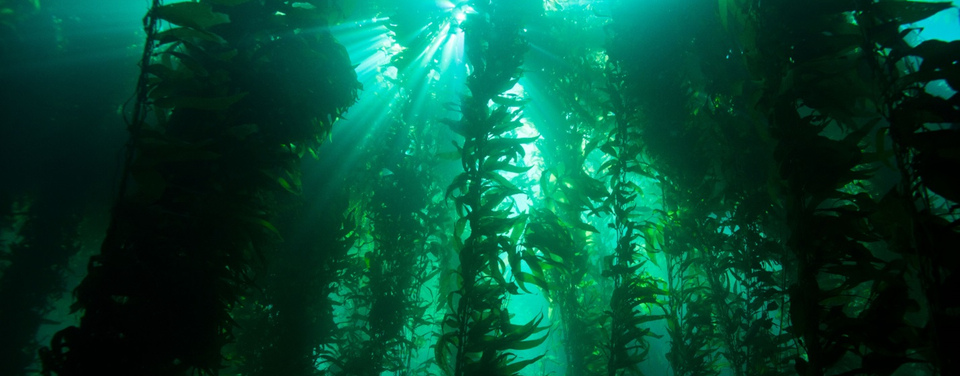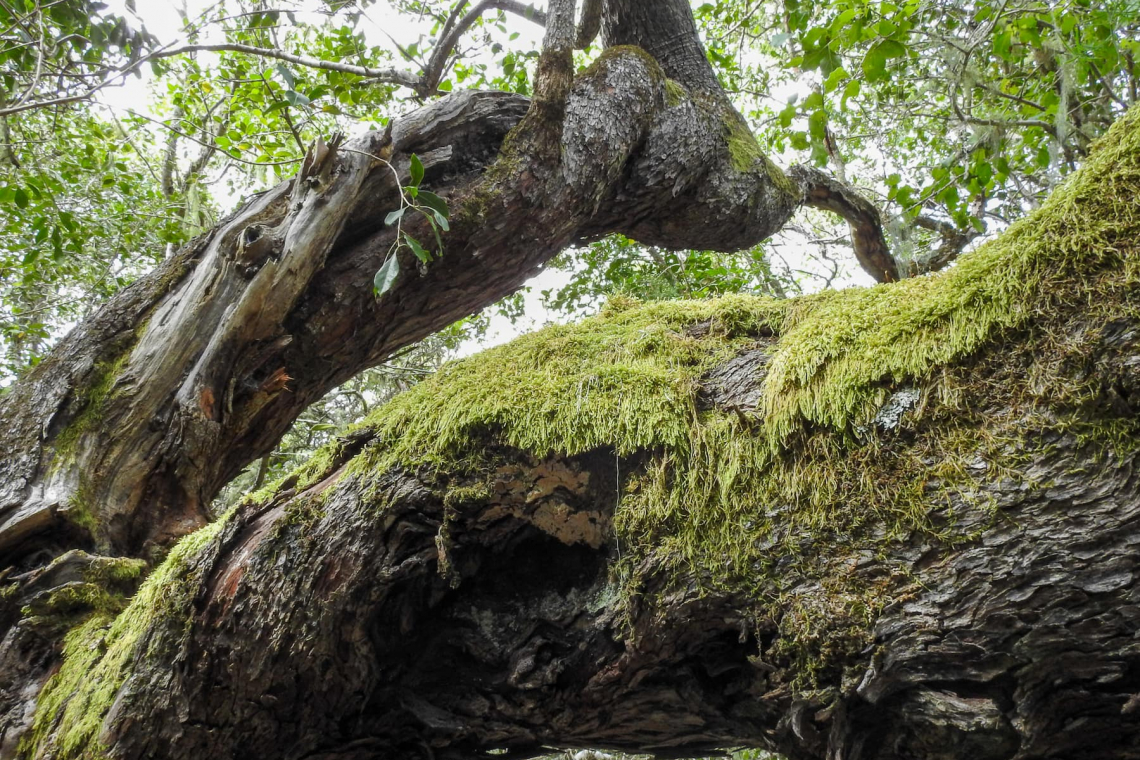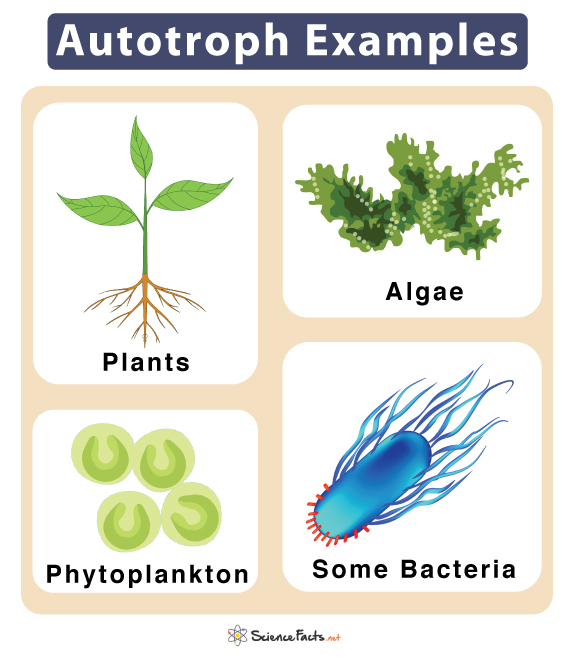What is an autotroph, in short? An autotroph is an organism that can produce its own food. In many media, “autotroph” is essentially synonymous with “plant” and “photosynthesis”. However, the reality is a lot more complex.
Autotrophic organisms are able to produce the complex organic compounds they need (such as protein or carbohydrates) from simpler forms of carbon, such as carbon dioxide (CO2). This is usually done by converting a form of abiotic energy and storing it in organic compounds. All organisms that are not autotrophs depend on consuming them for sustenance, which is why autotrophs, no matter what kind, are also called primary producers. The word stems from the Greek word τροφή (trophḗ), meaning "nourishment" or "food", and “autos”, which means “by itself”. Organisms that aren’t autotrophs are called heterotrophs, indicating that another organism is necessary for their sustenance. Primary consumers eat the primary consumers, and are consumed in turn by secondary consumers, and so on, giving rise to complex, ecosystem-wide food webs.
What is an autotroph
There are two main categories of autotrophs. The ones we as humans are most familiar with are photoautotrophs, which convert light energy through photosynthesis. The other main group is made up by chemotrophs, and they get their energy from inorganic chemical compounds using inorganic electron donors such as hydrogen sulfide, ammonium and ferrous oxide as reducing agents and hydrogen sources for biosynthesis. Other, more unusual energy sources have been observed in some organisms, such as radiotrophic fungi which are able to use the ionizing radiation found inside Chernobyl to stimulate growth.
Autotroph examples
Autotrophs have evolved diverse adaptations to fill all niches where life is possible. Examples of autotrophs are widespread and take on a variety of forms. Most green plants, from the moss patches found on tiny rocks to the gigantic baobab trees, are autotrophs. Unicellular and multicellular algae, kelp forests living in the ocean, cyanobacteria, chemotrophic archaea living near deep-sea thermal vents, the fungi growing in the abandoned Chernobyl reactors using radiation to grow – these are all examples of autotrophs.

Kelp Forest
Photoautotrophs
Ecological implications
Photoautotrophs are the primary consumers in most ecosystems, including all terrestrial surface ones and most marine ones too. They are better at producing energy than chemotrophs, which is why they outcompete them where the conditions allow photosynthesis. There is evidence of phototrophs dating back 3.4 billion years, with the first organisms probably relying on hydrogen rather than water. Cyanobacteria fossils can be dated to be around 2-2.5 billion years old, photosynthetic eukaryotes are around a billion years old, and the first land plants colonized land “just” 500 million years ago.
Some evidence suggests that chloroplasts, the components of plant cells responsible for photosynthesis, are evolved from endosymbiotic cyanobacteria – bacteria that were absorbed by eukaryotic organisms and evolved to live mutualistically within them, providing them with energy in exchange for nutrients and protection.
Importantly, not all photoautotrophs are plants, as cyanobacteria, algae and lichens (symbionts between cyanobacteria or algae and fungi) make clear. And interestingly, not all plants are autotrophs: many have evolved in very poor environments where they cannot produce their own food and developed adaptations that allow them to live as parasites, getting nutrients from other plants or even, in the case of myco-heterotrophs, from fungi. The rotten-smelling Rafflesia, for example, are root parasites. Other plants hunt their own food, such as the famous Venus trap, or the aquatic Utricularia vulgaris, which uses underwater bladders to “suck up” insects.

Chemoautotrophs
If you are a human, you love plants, and see them all the time. You likely included some plants in your last meal! However, if you are a microcellular heterotroph living in a cave, or around a deep-sea thermal vent, and light was not even a factor in your evolution, your main food will be chemotrophs.
Chemoautotrophs can be bacteria or archaea, but there are no known eukaryotic ones. They are split into several groups depending on the substrate they use: methanogens, sulfur oxidizers and reducers, nitrifiers, anammox bacteria, and thermoacidophiles. They are extremophiles, thriving in extreme environments where most other life would die within seconds, such as deep sea vents. Their growth can be dramatically fast, with some doubling their population within an hour. Their complex molecular adaptations make them interesting case studies for scientists and engineers and can help us develop materials suited for extreme environments.Since photoautotrophs generated the oxygen in Earth’s atmosphere, which they themselves need to survive as all photoautotrophs are aerobic, it is logical that chemotrophs predate them. And evidence shows the last universal common ancestor (LUCA), the population of organisms from which all life on Earth descended, was a chemoautotrophs. How old are chemoautotrophs then? As old as life itself. While not as complex as a flowering plant or as awe-inspiring as an old-growth forests sprawling the side of a mountain, chemoautotrophs are responsible for life as we know it.

Conclusion
What are autotrophs? Organisms that can produce their own food. And what do they do? Everything that makes complex life possible. They are the foundation upon which everything else is built. From single celled bacteria living in caves that will never be reached by humans, to archaea thriving in a thermal vent thousands of meters below the sea, to the lush tropical forests that we fight to preserve, autotrophs sustain all “higher” forms of life and shape the world around them. A world without autotrophs would be not just empty, devoid of life, but completely unimaginable.



